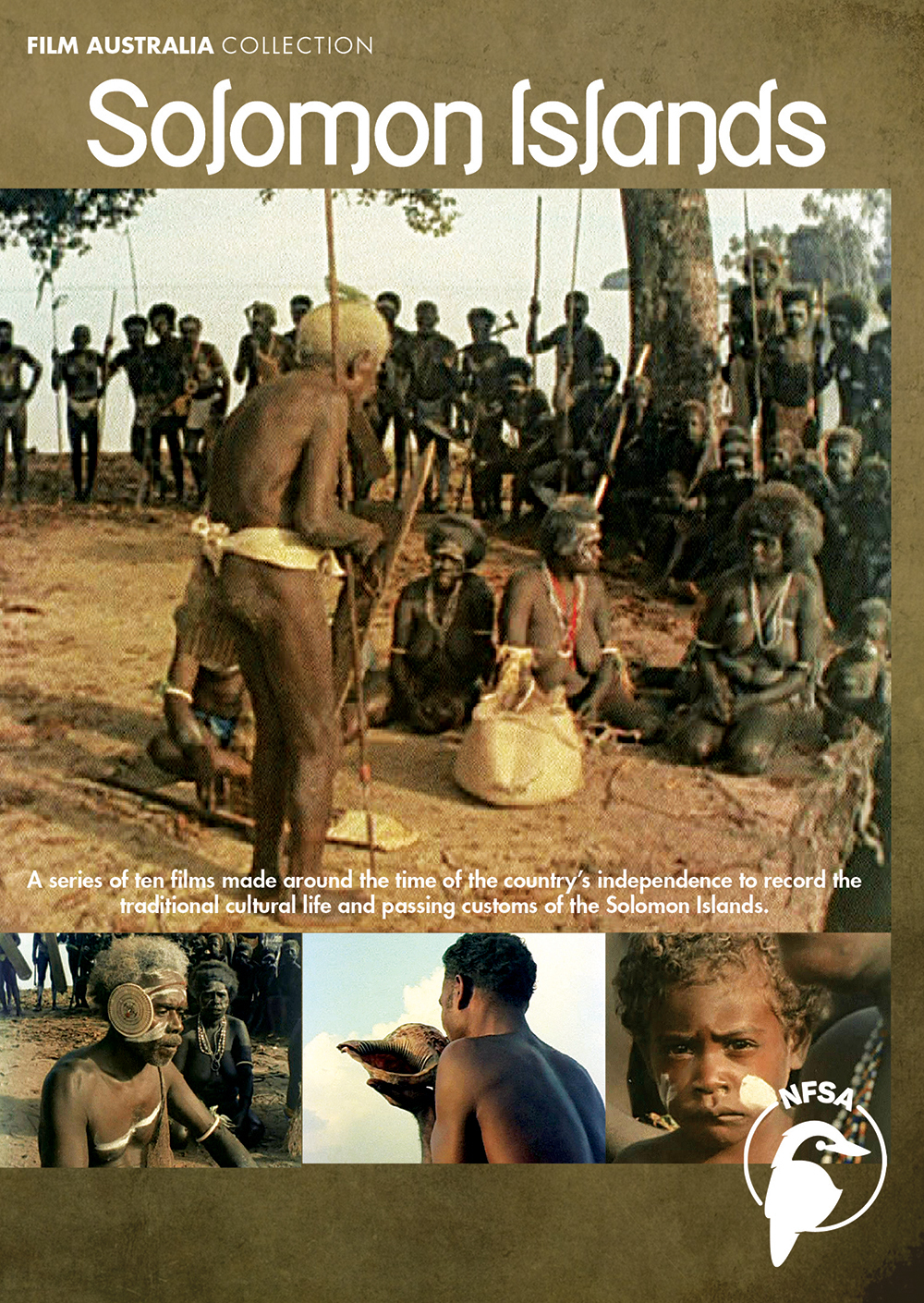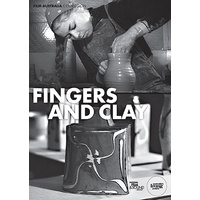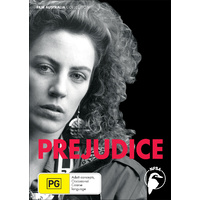1979, Total running time 220 Minutes
A series of ten films made to record the culture of the Solomon Islands.
Araha Ana Romo Shell money as legal tender was introduced when the paramount chief system started in the Solomon Islands thousands of years ago. Romo, the traditional red shell currency on the islands of Malaita, Guadalcanal, Uluwa and Makira, is still in use today for general trading and bride price. During the Romo ceremony, the people of South Malaita re-enact the inauguration of the first Paramount Chief. We witness the Romo shell being harvested from the sea and the customary preparation, cooking and feasting by the villagers, leading up to the ceremonial swearing-in of the Chief.
Bifo Kam This film is in two parts. The first shows the people of the Reef Islands building a large canoe using traditional tools. The second part shows the manufacture of “feather money” on the island of Santa Cruz. Feather money is slowly dying out; only one person still knows how to make it and this film records that method.
Ha’a Alahanga Ni Ulawa The ceremonial swearing in of two boy chiefs on the island of Ulawa in the Solomon Islands is a very special occasion and cause for great celebration. All the chiefs from nearby islands arrive by canoe to the sound of the conch shell blowing. Men dressed as warriors and carrying spears run through the village confronting each other in highly ritualized dances and challenges. The Christians carry out their solemn rites and blessings. There are speeches by the elders and then everyone sits down to the great feast of pigs, yams and taro. After the feasting there is singing and dancing, including the ancient Mighty Spirit dance, which is performed by the men.
Moro - Melanesian Bigman Moro and his people live in Makaruka village on Guadalcanal in the central Solomon Islands. Some see Moro as a cult leader, others regard him as confused and power hungry. But to many he is a real Melanesian ‘Bigman’ who has rejected European culture and modern technology, instead preferring to lead his people to economic independence by returning to traditional Melanesian customs and practices. We visit his village and observe the subsistence lifestyle of his people, who show us some of their crafts including the weaving of grass skirts, baskets and fishing nets. There is singing and dancing to traditional flute music and the ceremonial killing and cooking of a pig.
Nambo is a nutritious, biscuit-like food made from breadfruit. Nearly all Solomon Islanders eat Nambo, but very few know how to make it. This film depicts the breadfruit industry in the village of Otalo on the Reef Islands and explores the traditional manufacturing methods used to make Nambo. The biscuit, which is exported to the capital city of Honiara, provides much needed income to the people back in Otalo.
People of Niupani Niupani village is situated on Lake Tegano, on the island of Rennell, an upraised coral atoll in the southern Solomon Islands. The people are of Polynesian descent and their lifestyle is simple. The children paddle to school in their small boats, the men work in the gardens and fish on the lake, and the women look after the small children, weave baskets and mats and also practice the art of tattooing in their spare time. The introduction of Christianity imposed many changes on their traditional way of life, and over time, hostility and rivalry has built up between the South Sea Evangelical Church-goers and those who worship in the Seventh Day Adventist Church. And although the villagers’ lifestyle is seemingly idyllic, trouble is brewing for their beautiful lake, which is in danger from proposed bauxite mining.
Taem Bifo Long Lauru - Choiseul Customs When the Christian missionaries arrived on the island of Choiseul (Lauru), they stopped the people from worshipping their own gods. Singing and dancing were outlawed and the visiting of sacred sites was banned. Today only a few old people remember the ancient customs, which have been revived and re-created for this film. Warriors preparing for war offer up a human sacrifice to their supreme god Korotobi in exchange for power and guidance in battle, the craft of pottery hand-building is demonstrated in the open air and traditional singing and dancing, birthing and marriage rites are dramatically re-enacted for the camera.
Totora and Siwa Two ancient ceremonies are no longer performed by the people of Wairoki in South Malaita, Solomon Islands. They were forbidden by missionaries and the government because they involved killing and the destruction of property. This film shows the re-enactment of the Totora and Siwa ceremonies with their traditional pan pipe music, drumming and dancing rituals. Totora, meaning ‘to take’, was a celebration over several days where people could do as they wished—destroy trees, burn down houses and insult each other. It was also a time when young men could meet young women and arrange betrothals. The Siwa was an ancient ceremony of revenge. If a man committed murder or adultery, the victim’s friends and relatives would hire a warrior to kill him, then afterwards they would pay for a big feast to be held in the village.
Volo Momoru - The Turtle Net Turtles are good food. Turtle shell is also prized for trading, for making combs and jewellery and for decorating carvings. On the island of Santa Isabel (Bugotu) in the Solomon Islands, Andrew Kilgy is one of the last men who know how to weave the traditional net for catching turtles. Over the course of a week, the net is woven and then after being named and blessed by the village custom priest, the men paddle out to sea in their canoes to try their luck.
Wogasia An annual renewal rite, the Wogasia festival is held in late May or early June on the island of Santa Catalina (Aorigi) in the Solomon Islands to celebrate the beginning of the New Year. Usually lasting three of four days, it involves a ritual cleansing and purification of the island and its people and a petition to supernatural deities to bless the gardens. Celebratory feasting, symbolic spear fighting and fertility rituals, the blowing of conch shells, and traditional song and dance all play a part in the washing away of the old and a welcoming in of the new.
A Film Australia Production. Produced for Solomon Islands with Australian Development Assistance Bureau. © 2011 National Film and Sound Archive of Australia.
(197910000)
Producer: Don Murray
Directors: Graham Chase, Martin Cohen
Cinematographer: Dean Semler
Narrators: Alfred Aihunu, Romano Nongebatu
Year: 1979
Total Running Time: 220 Minutes (10 Episodes)
Classification: Exempt from classification
Curriculum Links: Pacific Studies; Colonisation, Decolonisation and Development; Culture, Myth and Symbolism; Culture, Conflict and Reconciliation; Studies of Colonialism and Post-Colonialism; Cultural Studies; SOSE/HSIE – Identity, Place & Culture.
| SKU | 197910000 |
| Brand | Film Australia |













